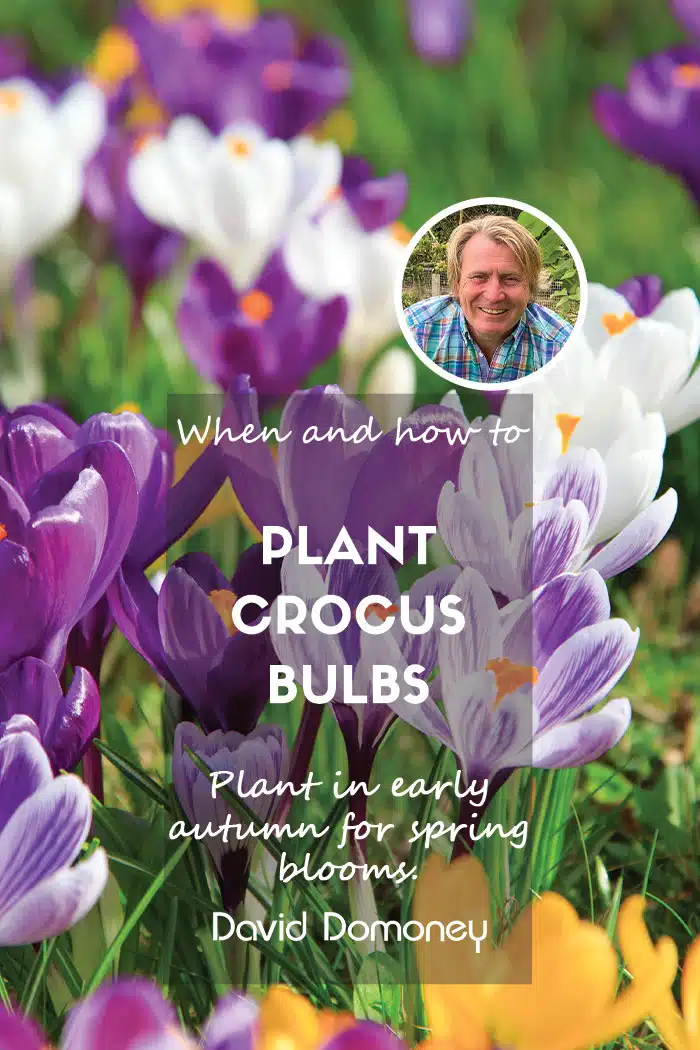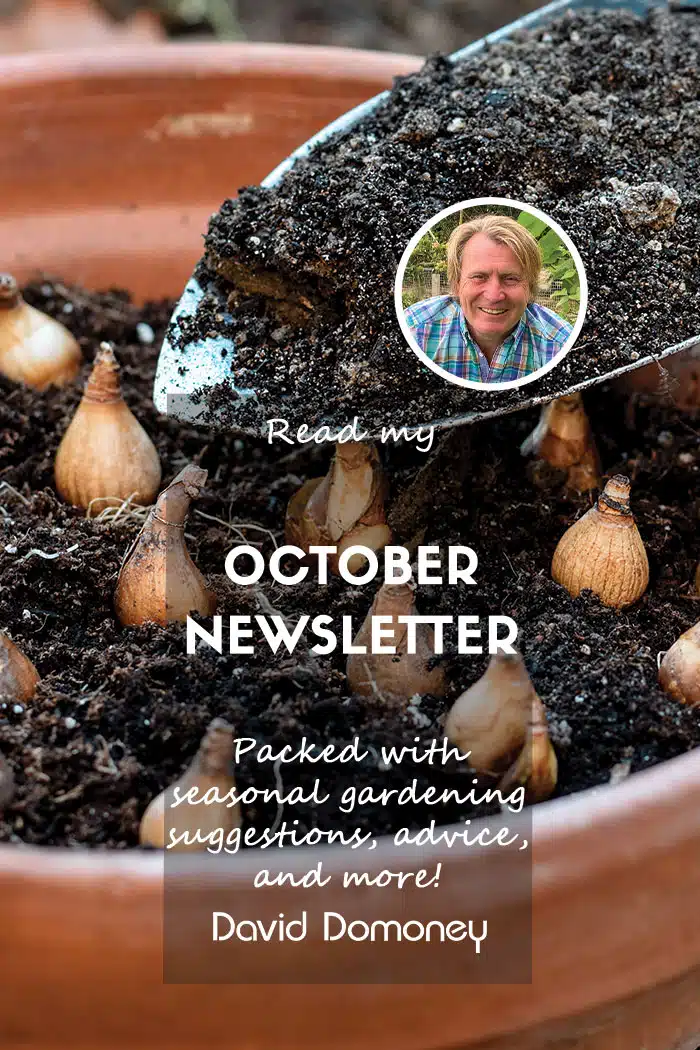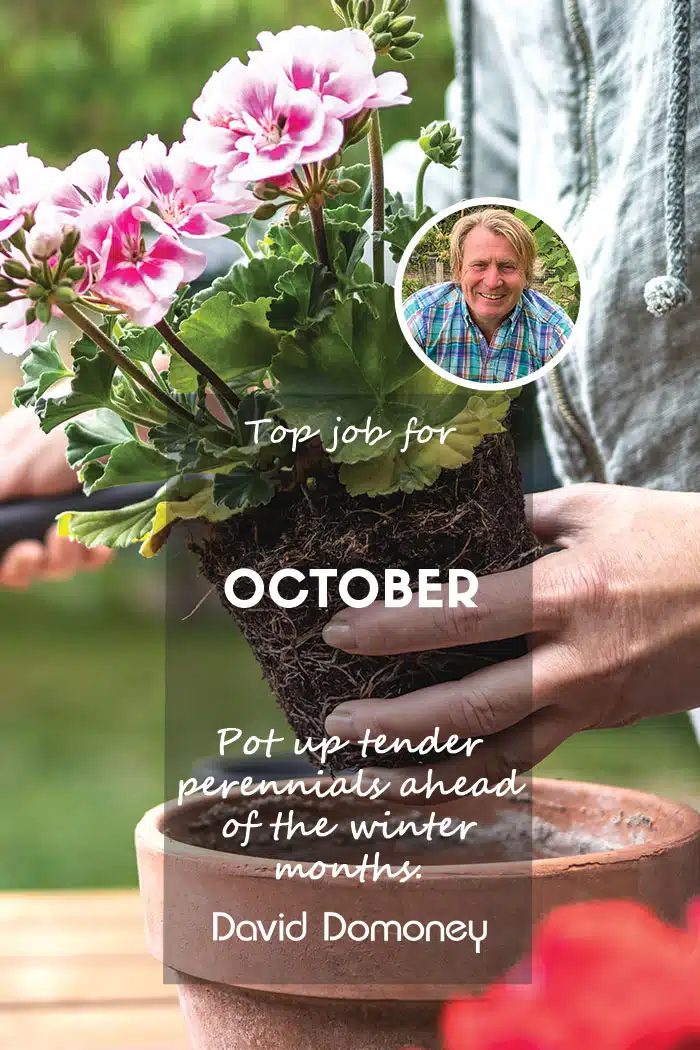David Domoney Glossary
There are currently 43 names in this directory beginning with the letter S.
Scale insects
Covered in a waxy shell, there are 25 species of scale insects in Britain. Like Aphids, they are sap-sucking insects that can weaken host plants and they also produce the honeydew substance that allows for the growth of sooty moulds.
Scarify
This is a process of heavy raking of the lawn which removes thatch – a fine layer of old grass stems, dead moss and other debris that gets compacted in the grass over time and can stop water and nutrients getting to the soil below. I recommend scarifying your lawn in the autumn, raking the lawn vigorously but taking care not to damage the turf below.
Seaweed products
Used in coastal areas as a soil improver for centuries, it is packed with useful plant nutrients including nitrogen, potassium, phosphate, and magnesium. Dried and liquid feeds are available from retailers.
Second earlies
Used to describe a pea or potato crip that is harvested after the earlies and before maincrop.
Seed
A seed is a plant embryo in a protective outer coating. They are created through pollination and will germinate to produce a new plant.
Seed Drill
A seed drill is a tool that allows the operator to plant out many individual seeds in soil at a chosen depth and spacing.
Seedling
A seedling is essentially a very young plant – usually one that has recently germinated from a seed and sprouted above the soil. Seedling are often grown in very small pots, or seed trays and then transferred to larger pots once the seedling has grown to a certain size.
Self-fertile
A self-fertile or self-pollinating plant does not need pollen from another plant in order to bear fruit. Many types of apple tree, for example, need two trees near to one another to pollinate each other and begin producing fruit. However, some trees and plants are able to bear fruit without the need for cross-pollination and these are known as self-fertile.
Self-seeder
A self-seeder is a plant that produces and sows its own seeds, often resulting in many more plants springing up around the parent plant.
Semi-Evergreen
A semi-evergreen plant is a perennial plant that retains some foliage all year round. It does not lose all its foliage over winter, like a deciduous plant.
Semi-ripe Cutting
Semi-ripe cutting is a technique used to propagate a wide range of plants by cutting a stem below the leaves, which can then be used to grow a new plant.
Serpentine layering
Serpentine layering is a method used to encourage roots to form at several points along one stem. It is done by looping the stems of climbers in and out of the soil which encourages the root formation.
Shelf (pond)
Pond shelves are ledges or shelfs, usually beneath the water and around the edge of a pond, where many species of aquatic plants will thrive. It is also where the majority of micro-organisms, which can keep a pond naturally clean, will live.
Shoot
A shoot is a section of growth from a plant; sometimes new stems coming from the main stem are described as shoots.
Simple layering
Simple layering is a technique where shoots are bent down to ground level, in order to form new roots while still attached to the parent plant.
Softwood cutting
Softwood cuttings are stems taken from young shoots, which can be propagated to grow new plants. Softwood cutting will root readily.
Specimen plant
A specimen plant is an unusual or impressive plant or tree that is grown as a focus of interest in a garden.
Spiking
Spiking is a technique used to get air into the soil of a lawn and also to encourage the storage of rain water to sustain the lawn grass. It can be done by using a garden fork, stick or lawn aerator to make holes in the lawn. Spiking has many benefits such as reducing thatch, improving roots and increasing drought resistance.
Spore
A spore is a unit of asexual reproduction that form an important part in the lifecycle of plants, algae and fungi.
Spring-tined rake
These are rakes which are designed to get between the grass to remove old thatch and dead material from the grass roots.
Staking
Staking is a technique used to train a plant to grow vertically or protect it from snapping in windy conditions. It is done by inserting a stake into the ground next to a plant and often tying the stake to the plant for extra security.
Standard
A tree or shrub that has been trained to a particular height, usually with a long bare stem and foliage at the top.
Stopping
Stopping is a technique used to make plants, which usually grow straight stems, bushier. It is done by pinching the very tip of a stem, which encourages the development of side-shoots.
Stratification
Stratification is a process used on seeds to simulate winter conditions and results in the seed germinating. It is also used to prepare seeds for the conditions they will be grown in and can be conducted to imitate both warm and cold conditions.
Strimmer
A strimmer is a hand-held electric or petrol-powered garden tool, which is used for cutting grass and weeds.
Subsoil
This is the layer of soil beneath the topsoil, which is usually less fertile and is sometimes compacted and prone to waterlogging. However, it can contain valuable minerals that deep-rooting plants can thrive off.
Succession Cropping
This is the repeated sowing of fast-maturing crops, such as radish, which will continue to produce through the season.
Succession Planting
Succession planting is ensuring that the various things you plant will be flowering at different times of the year, rather than having all of your plants bloom in one or two seasons. This helps your garden to hold some colour and structure all year round.
Successional sowing
The process of sowing seeds at intervals either weekly or fortnightly to ensure that you have a continuous crop. This approach ensures that you can harvest as you need rather than all the produce being ready at the same time.
Sucker
Suckers are shoots that grow from the roots of plants. If left, they can grow into a separate plant.




Leave A Comment